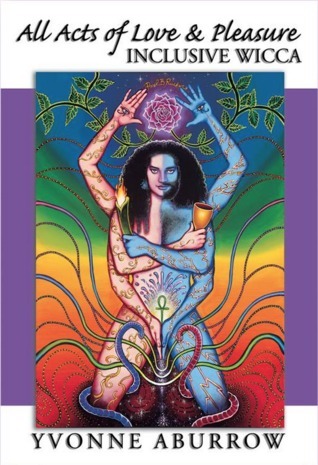I can’t be the only person who starts reading a Pagan book, gets to an exercise in the middle of the chapter, thinks that I don’t have time to do the exercise right now, and either puts the book down, planning to come back later (and never do), or skips the exercise and reads on.
There’s a certain very famous and well regarded Pagan book that I own a copy of but have never finished because of this exercises problem (it’s mostly exercises so it’s just never going to get finished).
Exercises at the end of the chapter
This is why the exercises and discussion points in my books are at the end of each chapter, so that people like me can come back and do them later, if they feel so inclined. By putting them at the end of the chapter, they’re easier to find again later.
You could also use Dark Mirror: the Inner Work of Witchcraft as a coven training book by reading a chapter in advance, discussing the questions, and then doing the exercises together as a group.
I also dislike recorded visualizations, so I try to make mine short and simple enough that people can memorize the gist of them without recording it verbatim.
Footnotes versus endnotes
Similarly with endnotes in academic books. I used to read books with endnotes by having a bookmark in the endnotes so I could refer to them when they came up. This is all the more frustrating when some of the endnotes are fascinating tidbits that I wouldn’t want to miss, and some of them are just “Ibid.” Now I’m afraid that life’s too short and if you do your notes as endnotes, I’m very unlikely to read them.
And that’s why I use footnotes instead. You can just glance at the bottom of the page and then carry on reading, instead of having to look them up at the back. I stopped using the annoying inline citation style favoured by social scientists too; it renders the text almost unreadable. Footnotes are more accessible.
The absolute master of the footnote as an art form was of course Terry Pratchett. Some of his footnotes were wonderful. You also get a good dollop of Pagan theology with his books.
I did organize the further reading section of Dark Mirror by chapters, though. That way, it’s arranged by topic.
I’m curious to know whether others have actually done all the exercises, or a majority of them, in Pagan or spiritual books? And whether you read footnotes? Or endnotes?
If you enjoyed this post, you might like my books.



I experience textbooks in much the same way: a chapter feels like a “unit” of knowledge/insight, so I naturally want to read the chapter then put it into practice. There are some books I’ve completed all the exercises in, but I have a stack of books I’ve read all the text but not done the exercises and another stack where I’ve put it aside to do the exercise and not gone back yet.
The mixing of interesting endnotes with plain citations irks me even with footnotes: my ideal approach would be footnotes for asides/expansions and endnotes for citations.
LikeLiked by 1 person
That is a very good point that supplementary information should go in footnotes and citations in endnotes. I wonder if Microsoft Word or Google Docs would cope with that though…?
LikeLike
Since the introduction of word processors that could handle footnotes (at least 35 years ago) there has been no excuse, none whatsoever, for using endnotes. When you had to type an MS on a manual typewriter, and set it in hot metal, yes. But after 1975 or thereabouts, no.
And yes, I often skip exercises, and think I will get back to them later, but never do.
LikeLiked by 1 person
Thank you Steve — I’m so glad it’s not just me!
LikeLike
I remember when I was first exploring Paganism and was reading Marian Green’s ‘Natural Witchcraft’ and Vivianne Crowley’s ‘Principles of Wicca’ during those years. I read them both with the same approach: read until the exercise, do the exercise and carry on reading which had at least two drawbacks: 1, it would be a while until I could do said exercises due to juggling coursework and jobs at the time. 2, by the time I had practiced the exercises, I was so focused on them that I would have forgotten what I had learned previously.
Having learned from both, I know read everything twice: once to digest and the second to recap and try out the practice. This approach has helped me considerably in my OBOD studies!
In terms of footnotes: love them, but I can also treat them like a rabbit hole and want more minutae for detail. Side notes are fine unless they take up more of the subject matter than the chapter (I found this with Silver Ravenwolf’s work). I prefer to have all notes at the end of the chapter rather than clumped at the back where you have to keep referring back and forth.
LikeLiked by 1 person
You’re much more diligent than me!
I find notes at the end of the chapter annoying because then I have forgotten the context. I suppose one could say the same for exercises and discussion points, but my discussion points are more about elucidating the reader’s ideas.
LikeLiked by 1 person